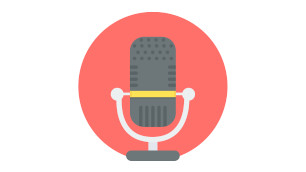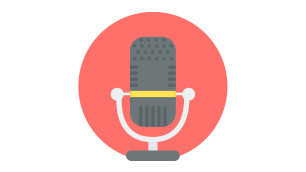Setting Goals
Let’s not forget the real purpose of improving your pronunciation: it’s so people can understand you better. While it can be fun and rewarding to impress people with your amazing talents as a cunning linguist, a more reasonable and realistic goal is “comfortable intelligibility[3]”. It’s been argued for decades that “language learners need no more than a comfortably intelligible pronunciation[4]”
Basically, you have two choices: you can leave your interlocutor (the person with whom you are speaking) annoyed – with constant interruptions, repetitions, and bizarre attempts to say something perfectly – or charmed with your interest and ability to speak their language with them, albeit with a little accent.
Think about it: Americans love the French accent in English! We would never want them to speak just like us. Believe it or not, French people think our accent is cute when English speakers speak French, too. The motto we live by here at Linguistica 360 (News in Slow) is: even if it’s not perfect, say it with confidence!
Final Thoughts
Question: Should I rely on speech recognition software?
Answer: No. At a certain point, once you have developed your listening skills, you are the best judge of your own pronunciation – much better than any speech recognition software. The way to move forward is not to “beat” a machine and have your speech “accepted” by an algorithm. Success in French pronunciation comes from developing the skills to know if what is coming out of your mouth sounds like real French.
The bottom line: It’s pointless to try to sound like a native speaker right from the beginning. Forcing yourself only leads to frustration and quitting. Good listening and imitation can help you to make consistent progress, without demanding perfection. Learners in general need help in order to notice the difference (or ‘gap’) between their own production and the native model input provided to them[5], and that’s exactly what these exercises offer.
The human voice is an instrument, and just like a piano player needs to practice and develop the muscles in their fingers, so do we need to practice and develop the muscles involved in speech. Instead of forcing ourselves to nail foreign language pronunciation perfectly every time, we believe that a more natural, intuitive approach is not only more rewarding, but more effective.
Video: Practice Techniques
Ready to try a new approach to building your speaking skills? Below is an introduction to our video series hosted by a linguist and teacher, entitled Learning by Ear: A Guide to Practicing Pronunciation.
Further Reading
References
3. Celce-Murcia, Brinton, & Goodwin (1996). Teaching Pronunciation: A Reference for Teachers of English to Speakers of Other Languages [https://books.google.com/books?id=twC-H4a8VcYC&printsec=frontcover&source=gbs_ge_summary_r&cad=0#v=onepage&q&f=false]]
4. Abercrombie, D. (1949). Teaching pronunciation. English language teaching, 3, 113-122. [https://academic.oup.com/eltj/article-abstract/III/5/113/485527?redirectedFrom=fulltext]
5. Derwing, T. M., Munro, M. J., & Wiebe, G. (1998). Evidence in favor of a broad framework for pronunciation instruction. Language Learning, 48, 393-410 [https://onlinelibrary.wiley.com/doi/abs/10.1111/0023-8333.00047]







